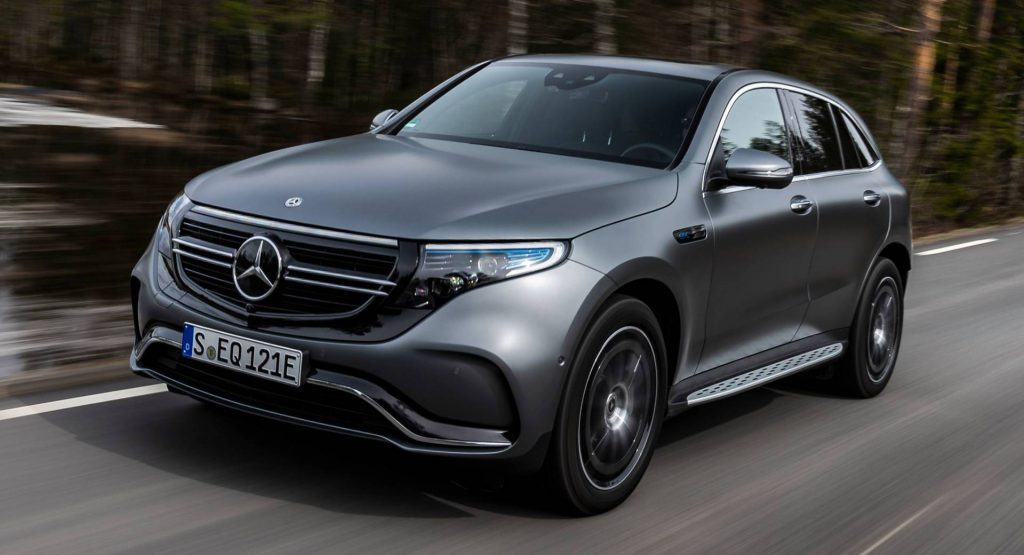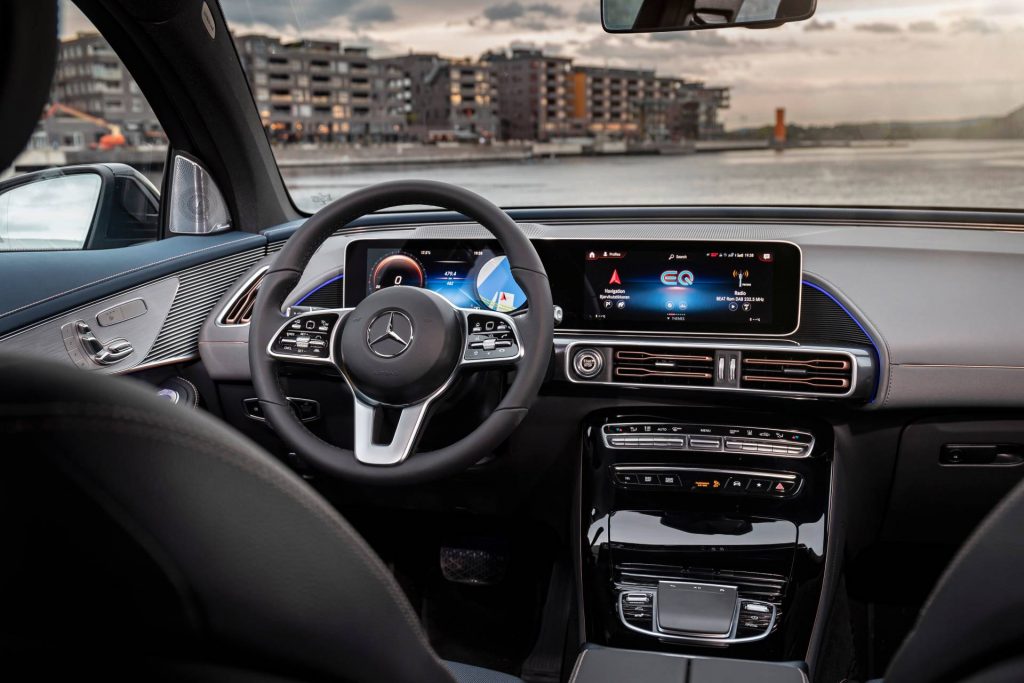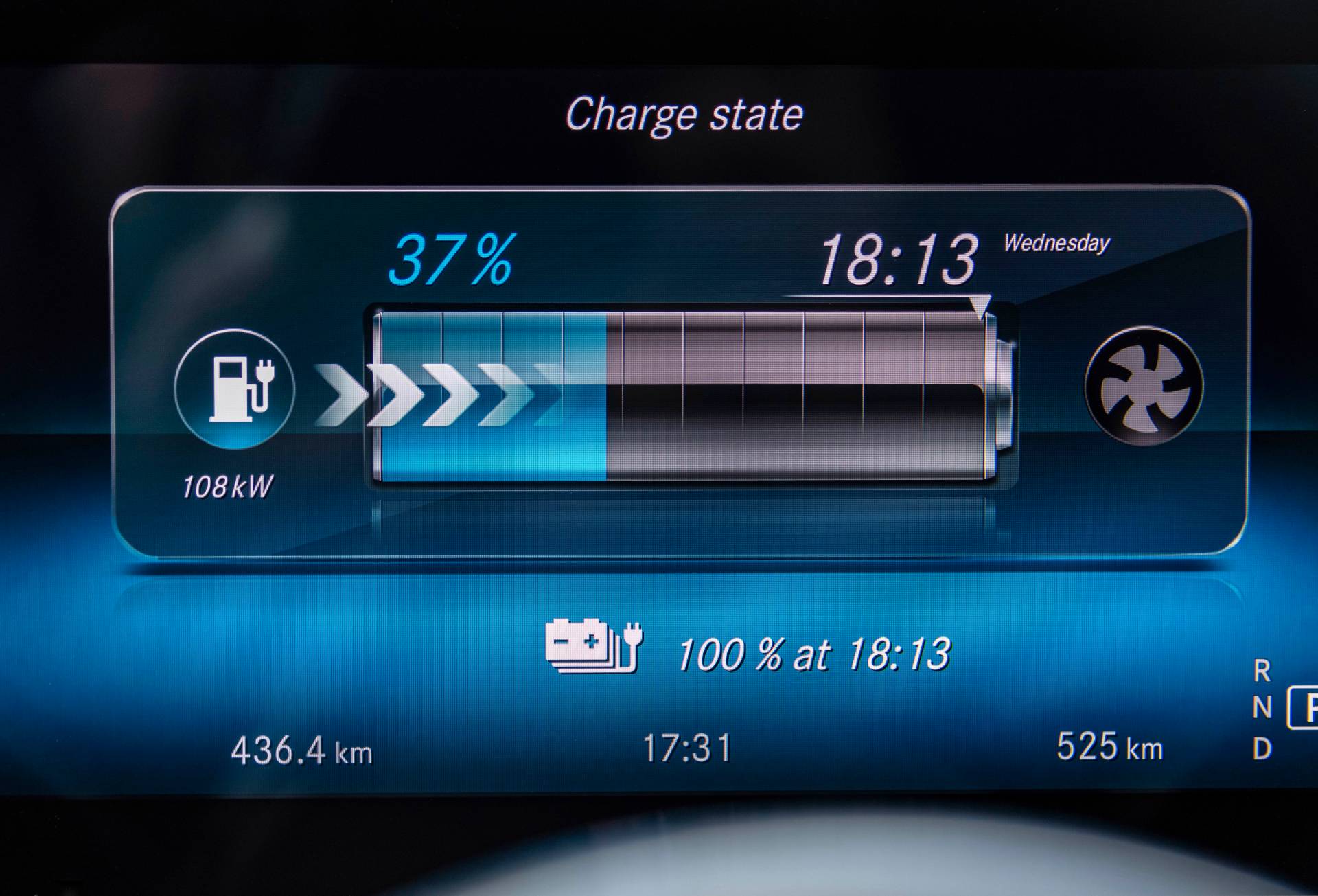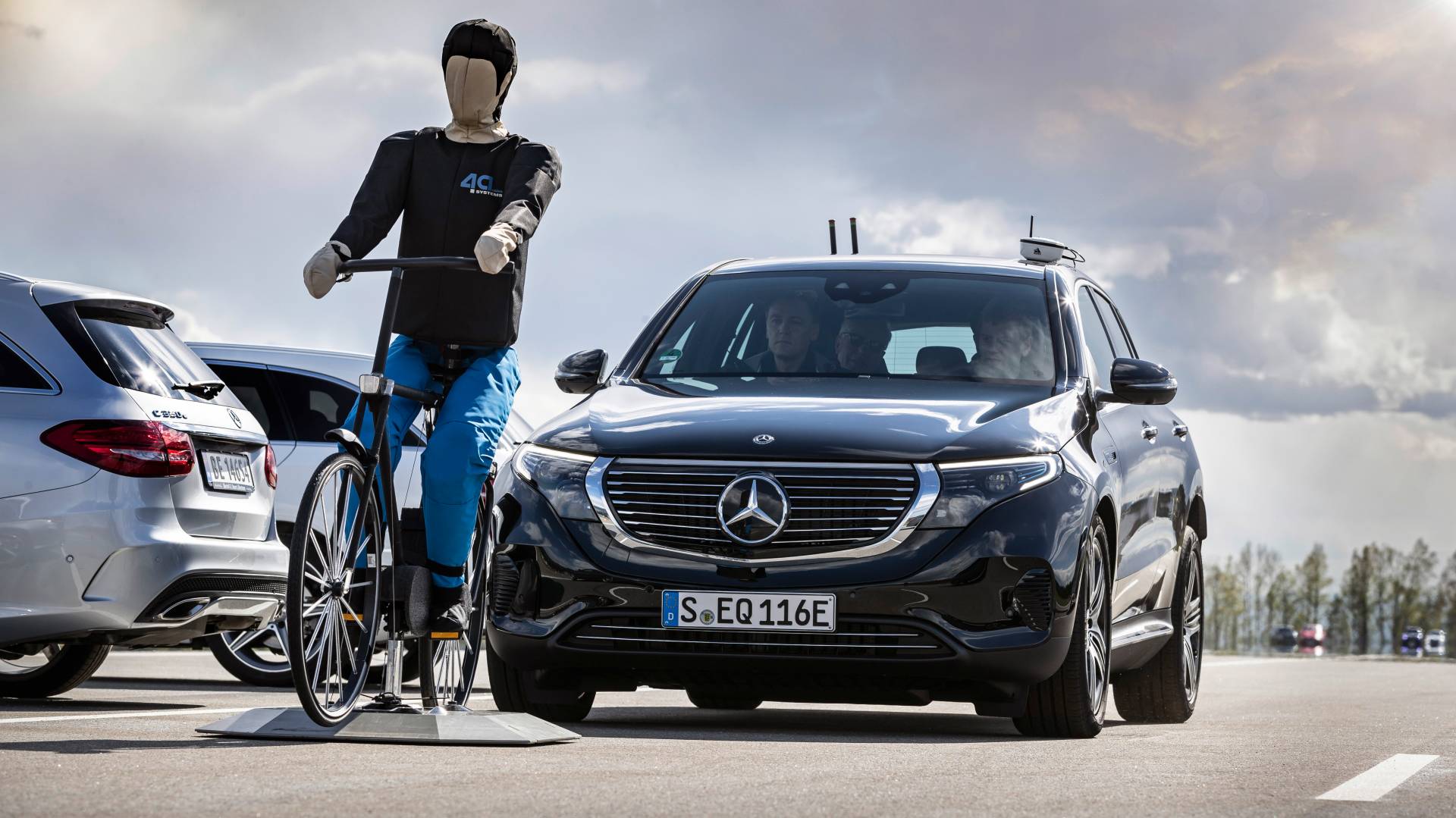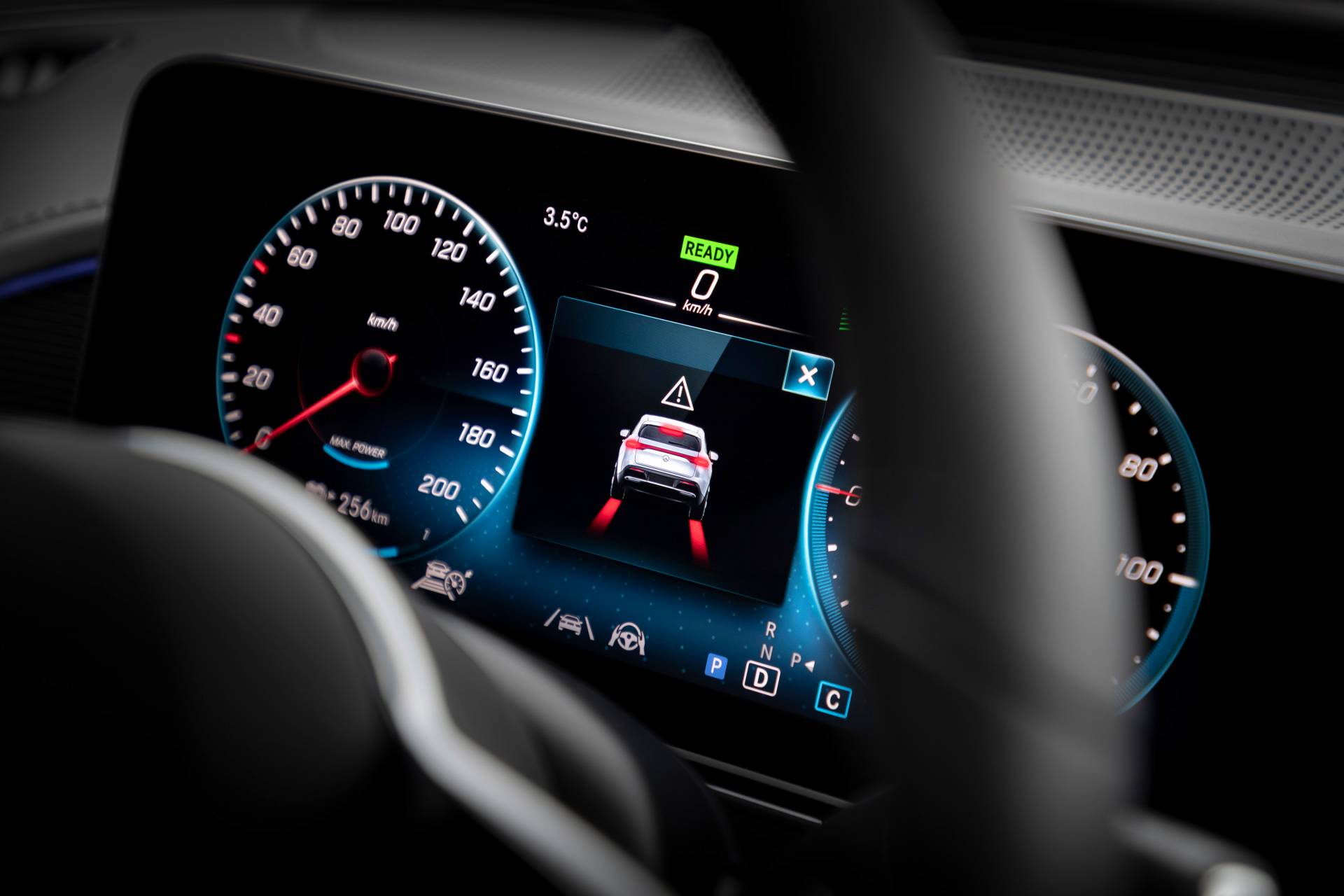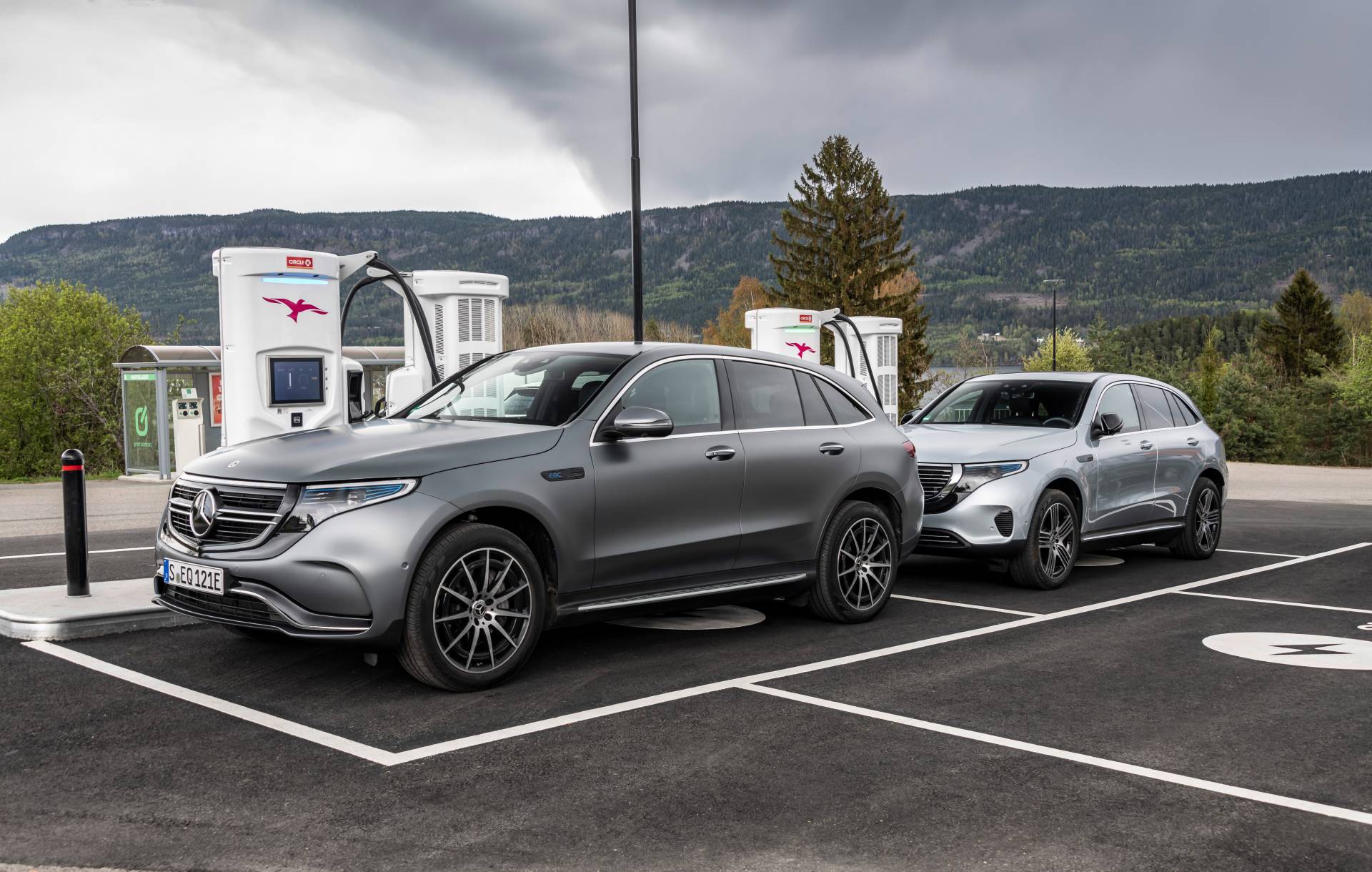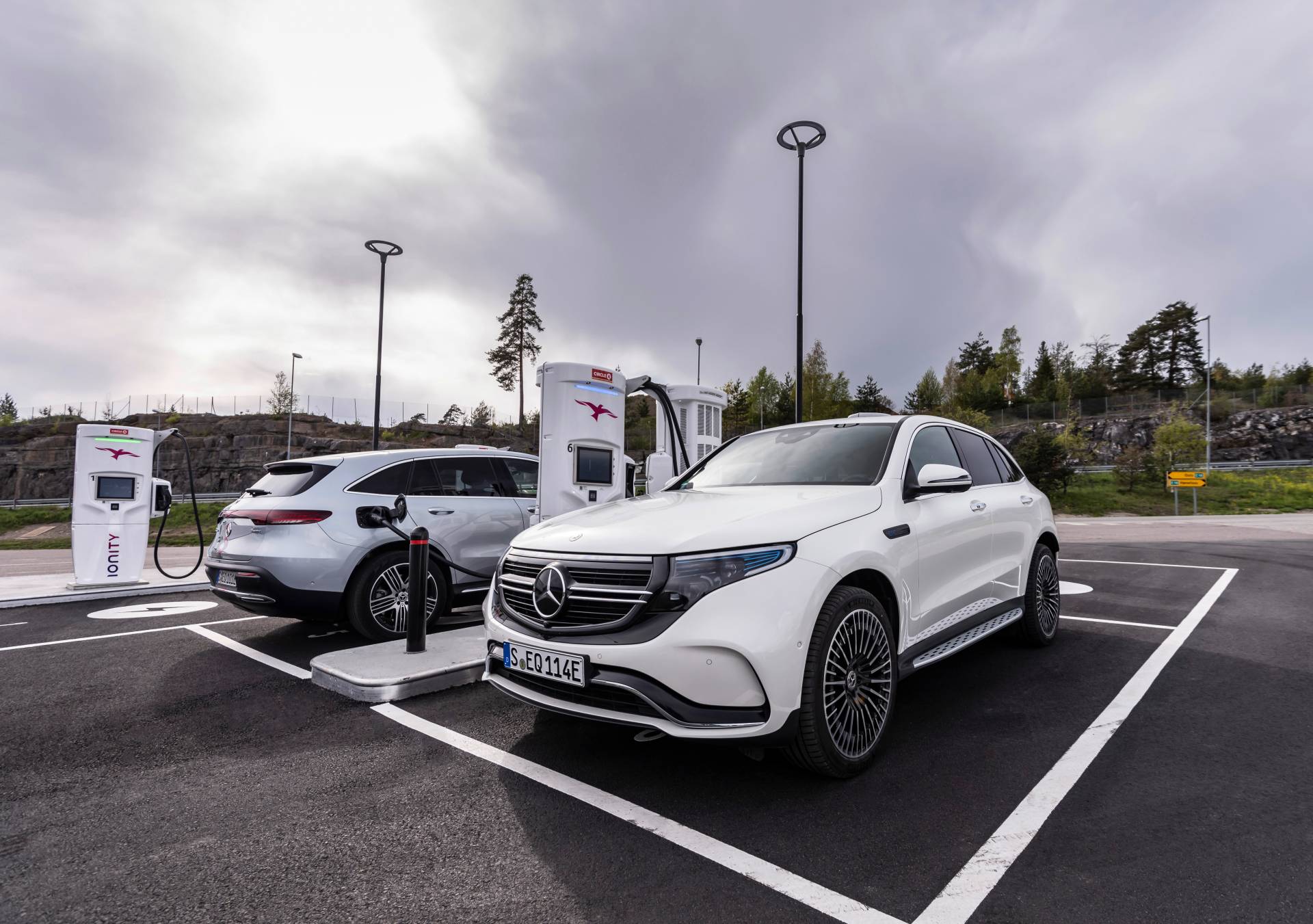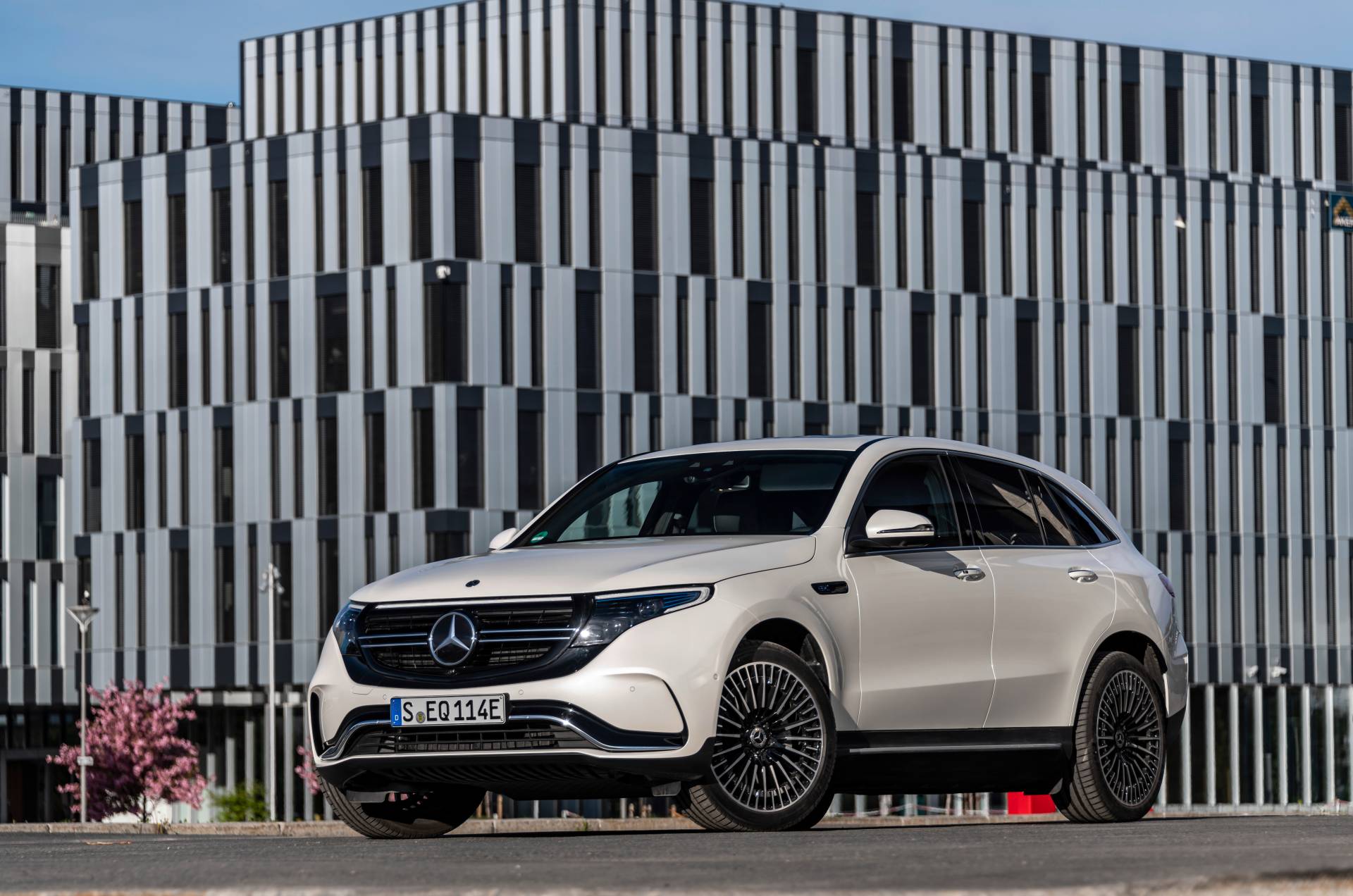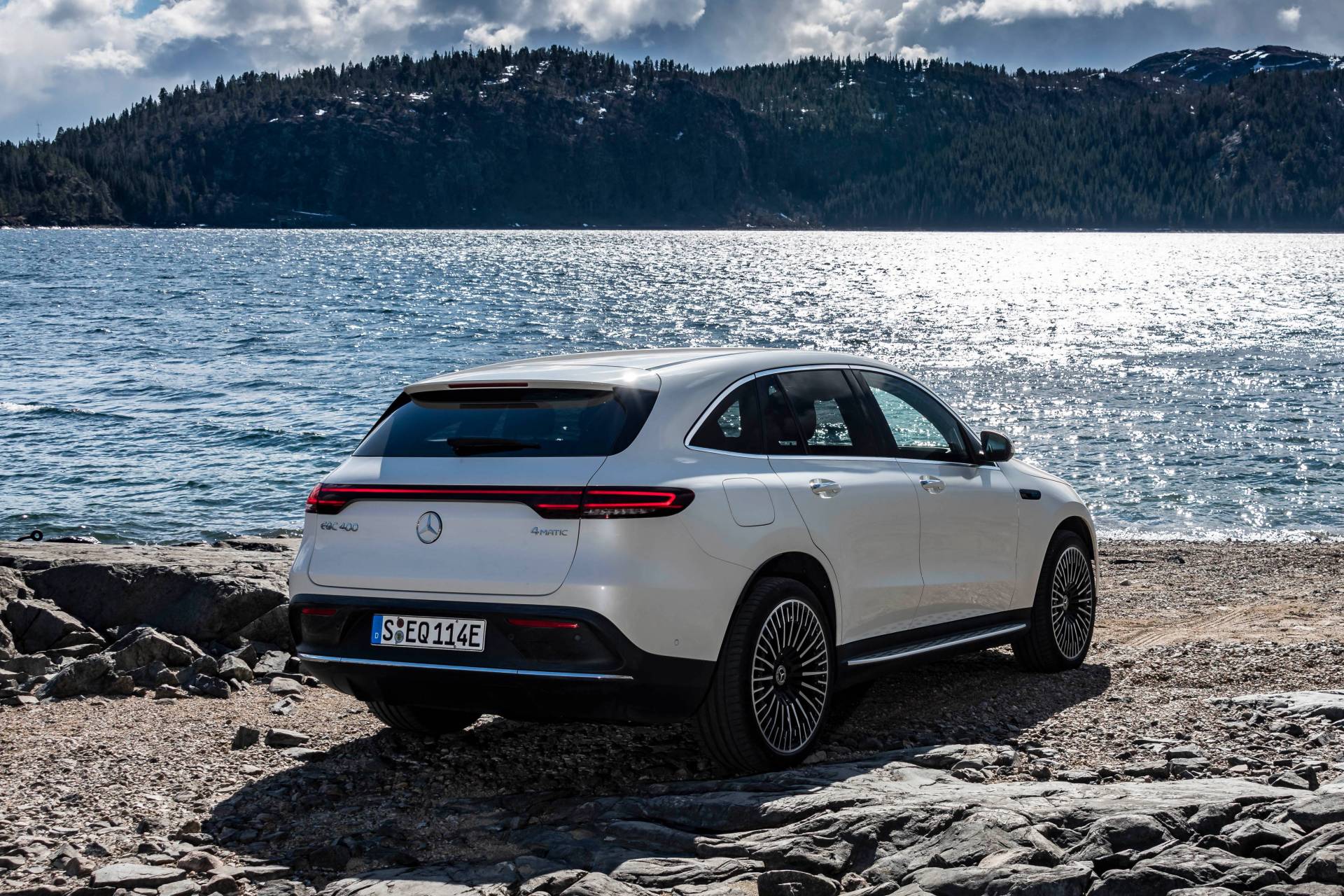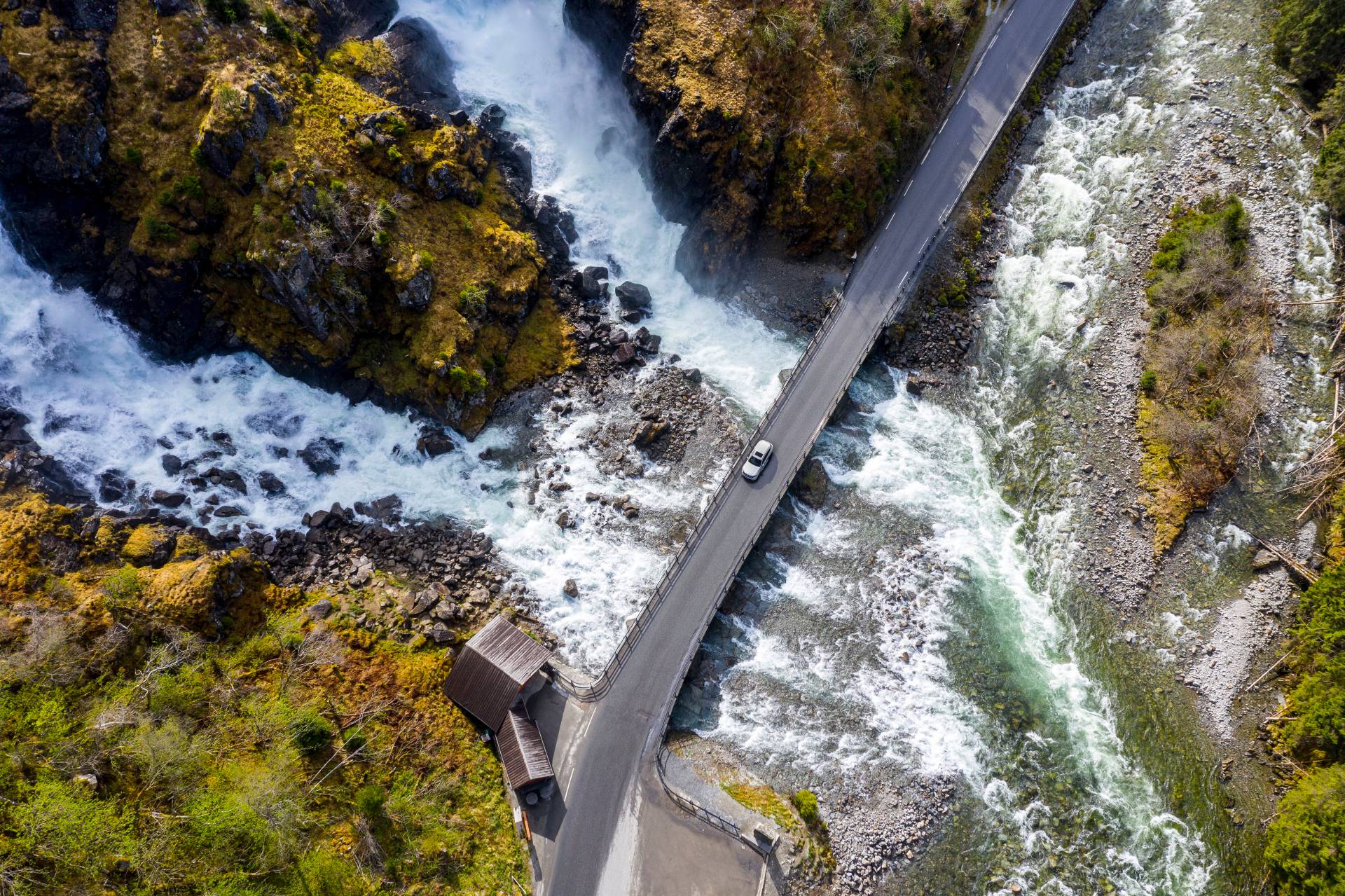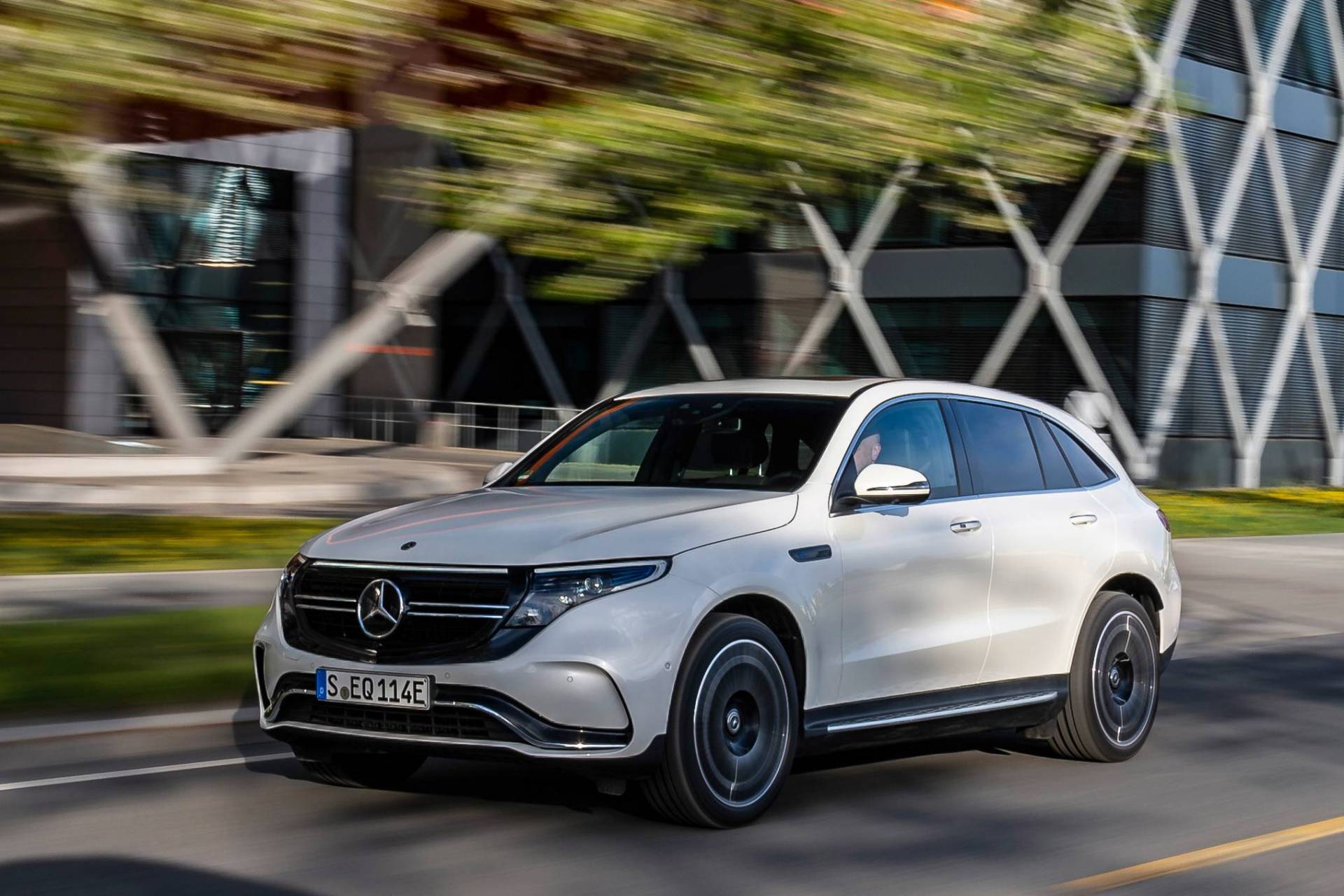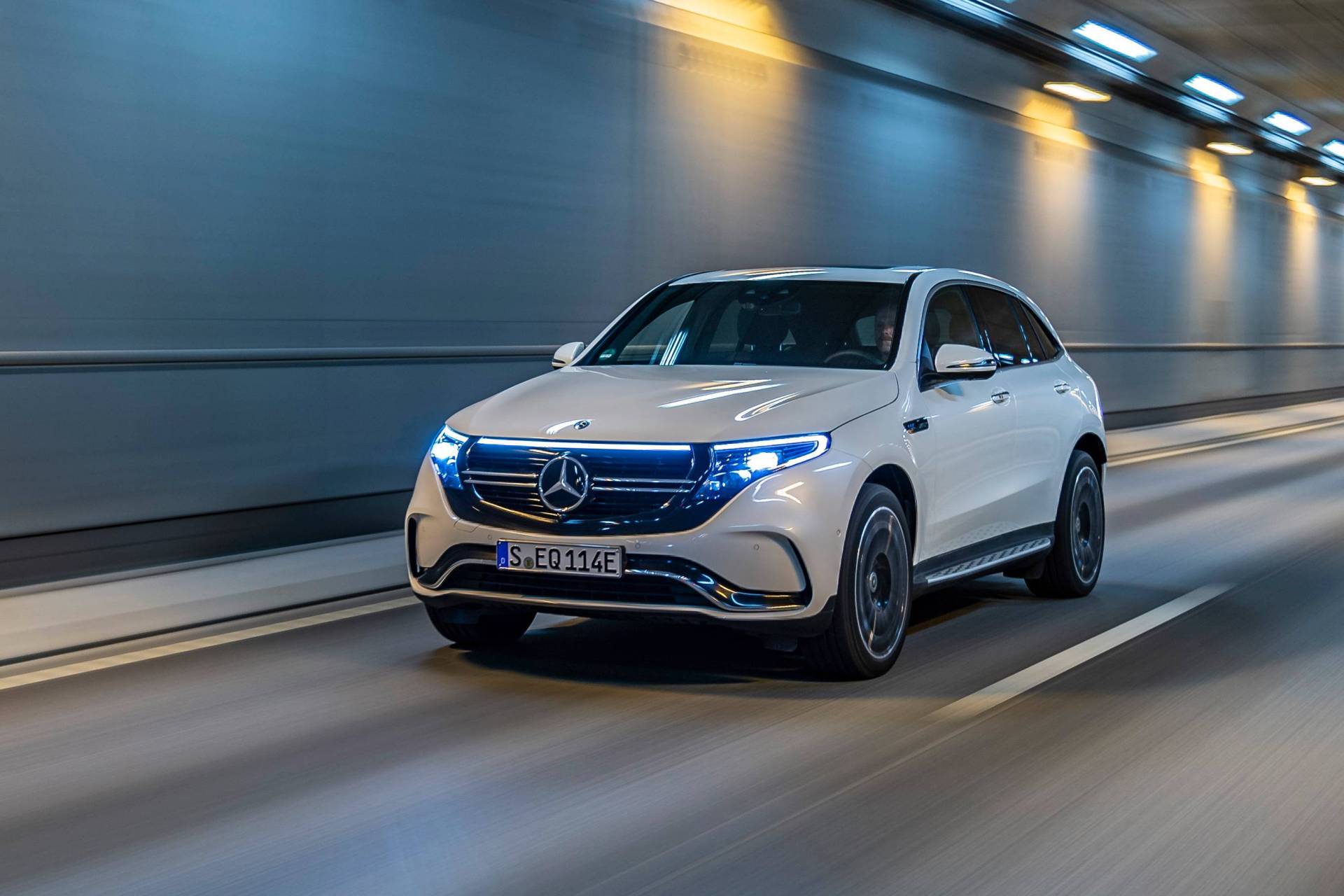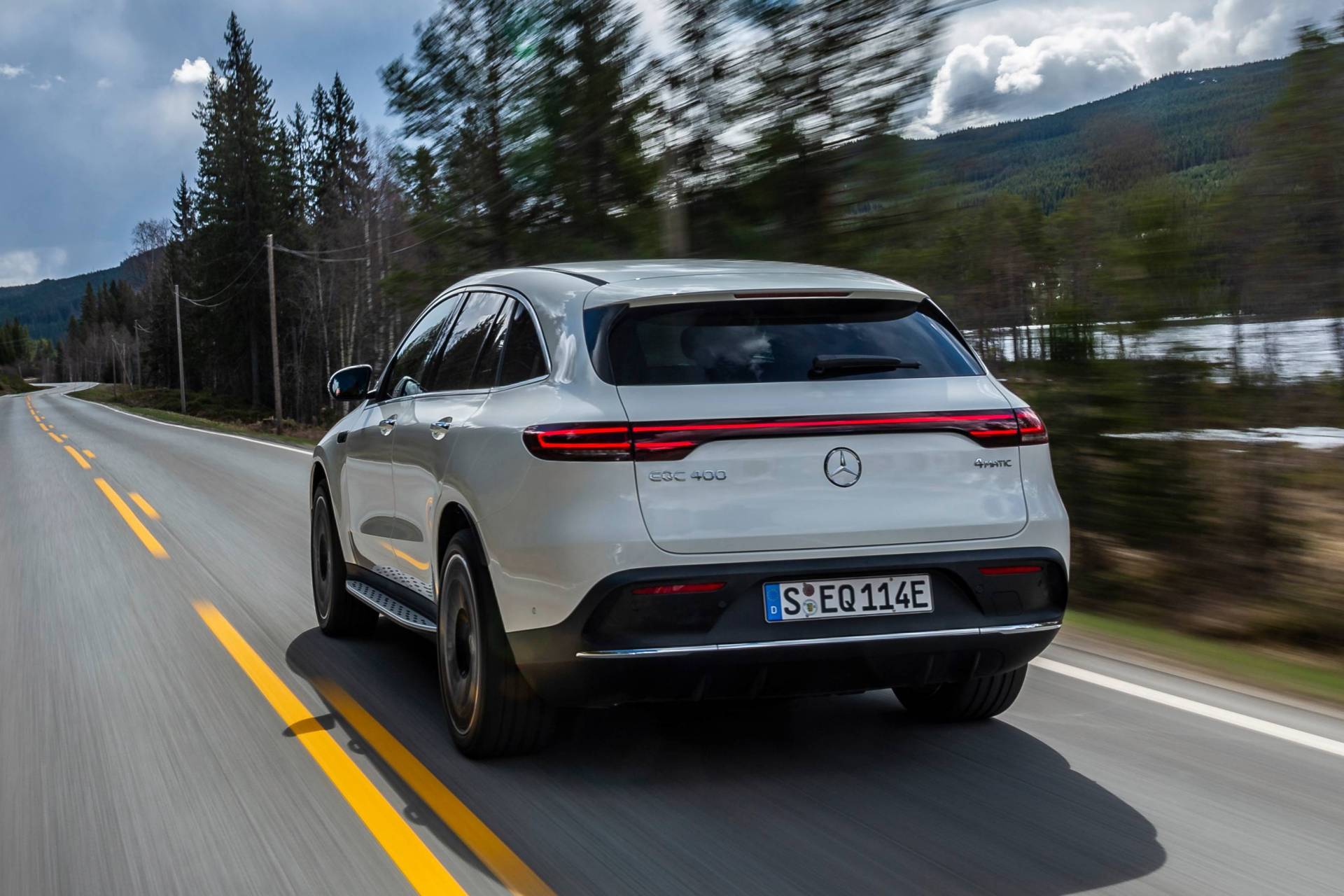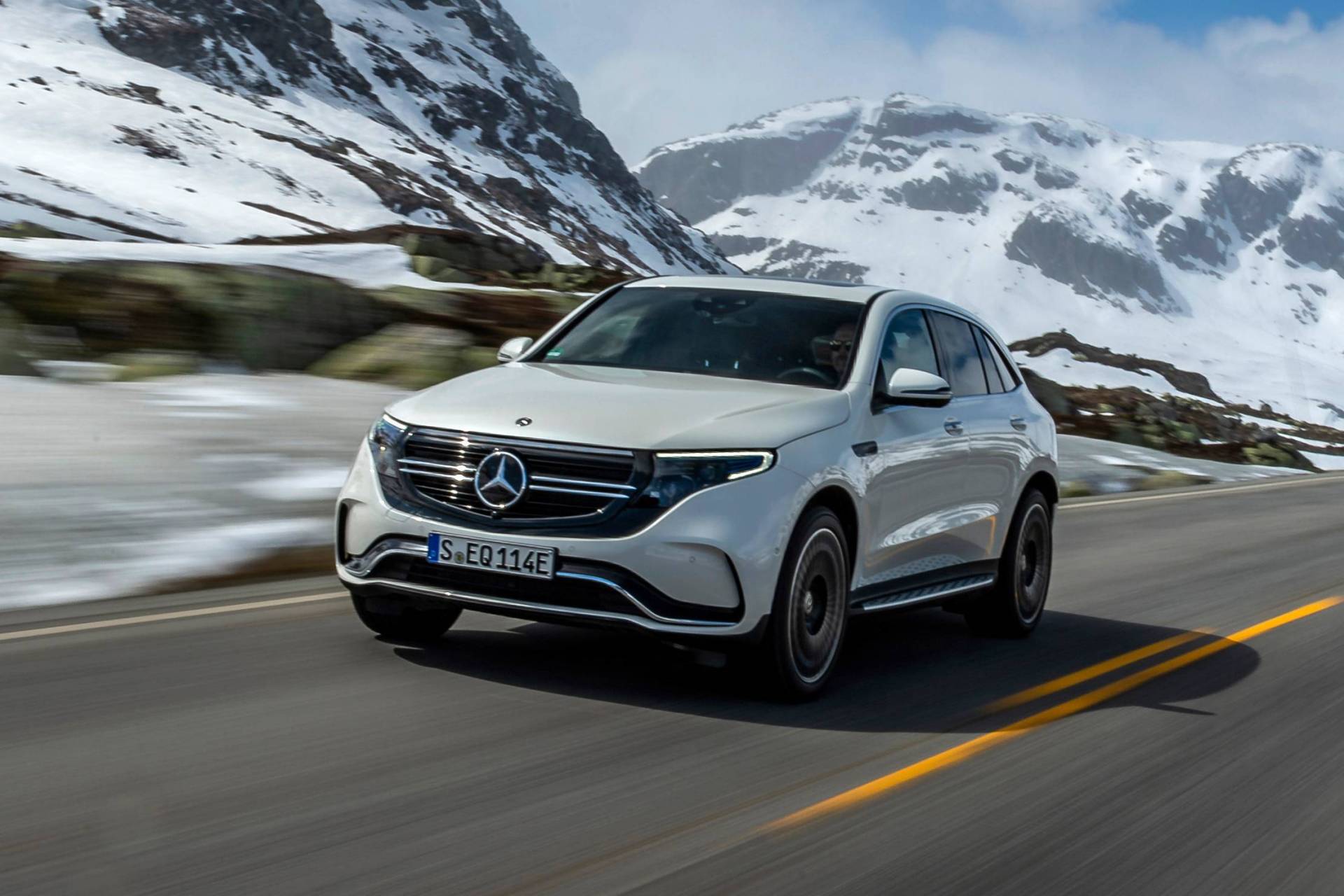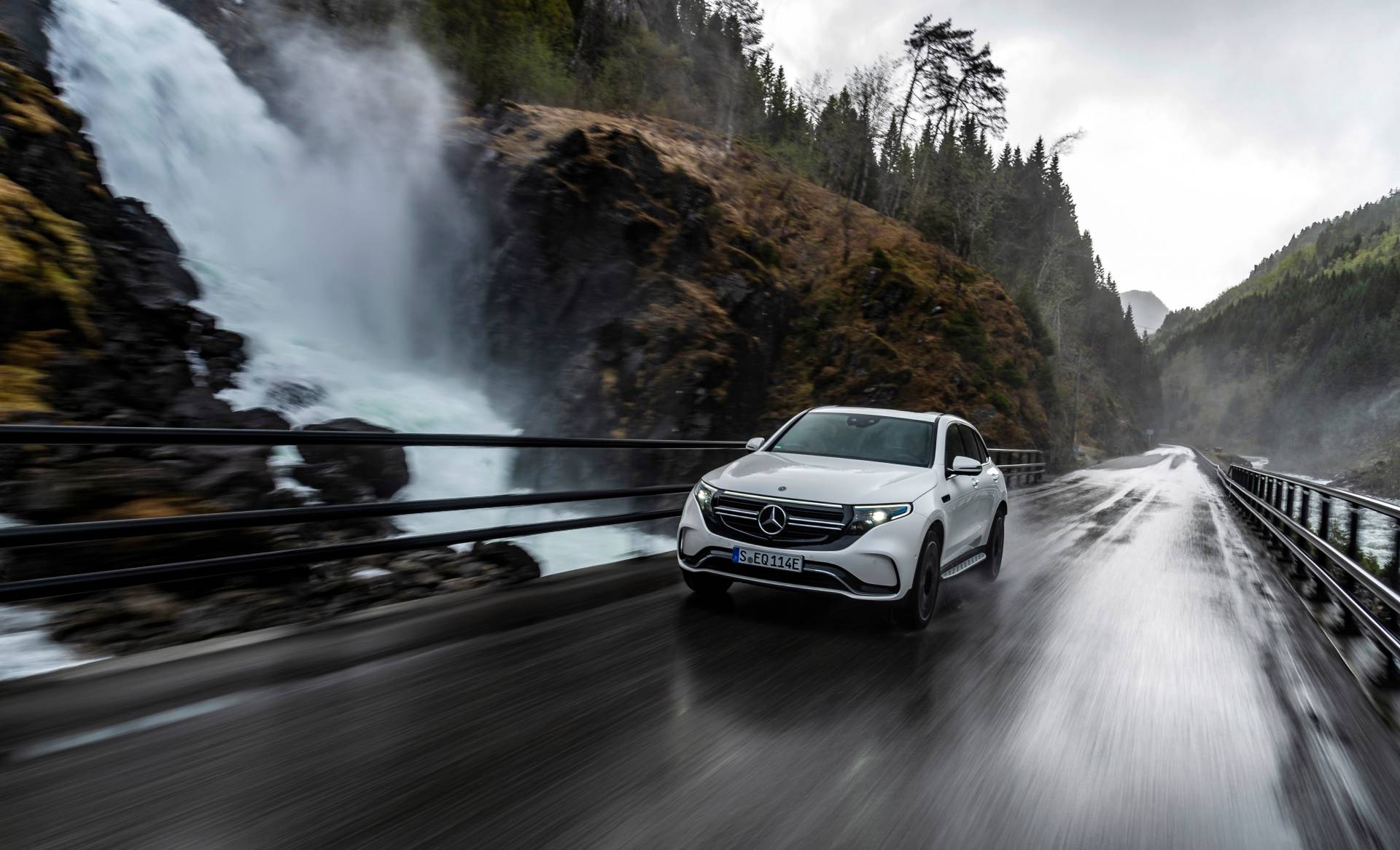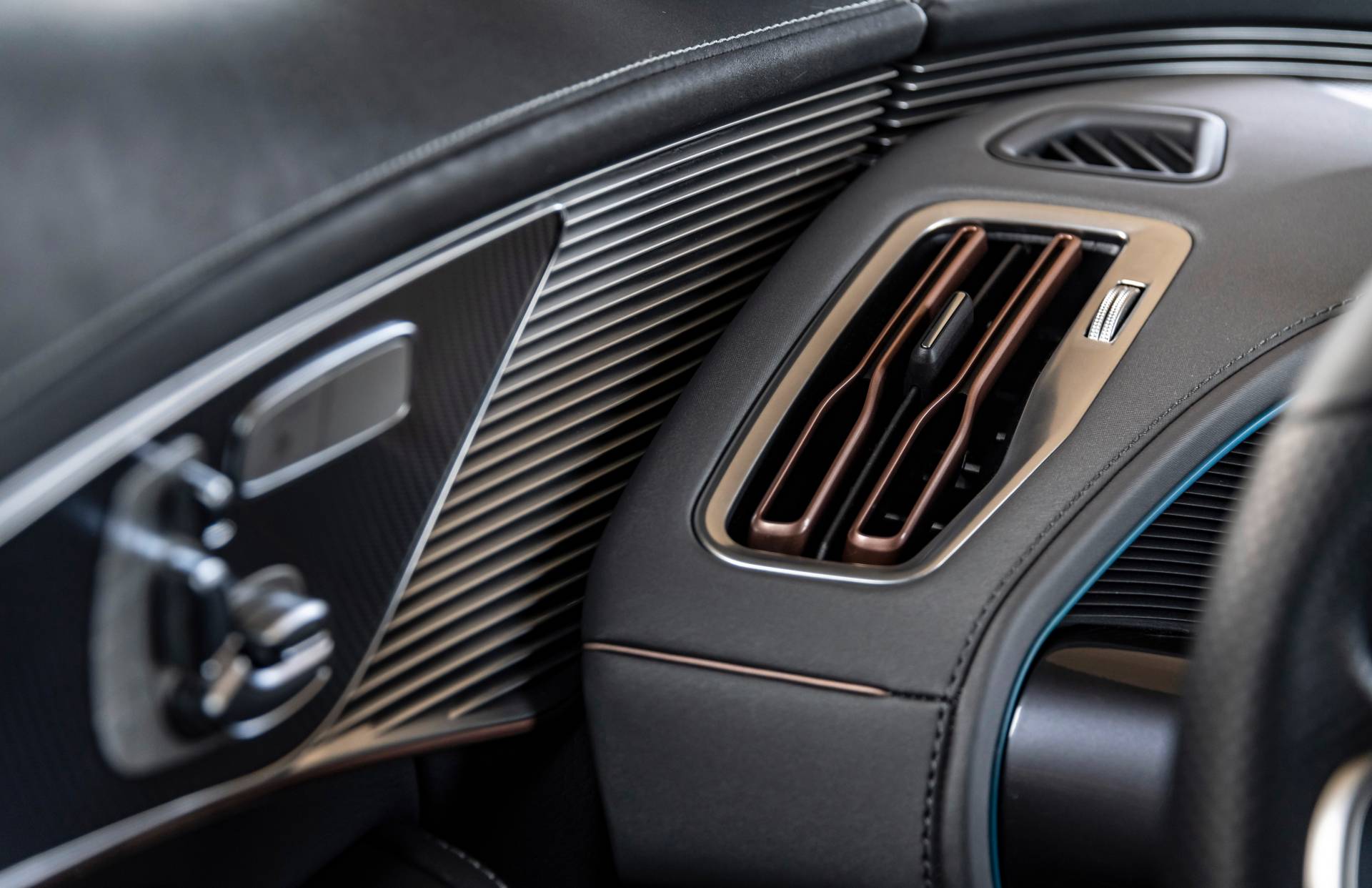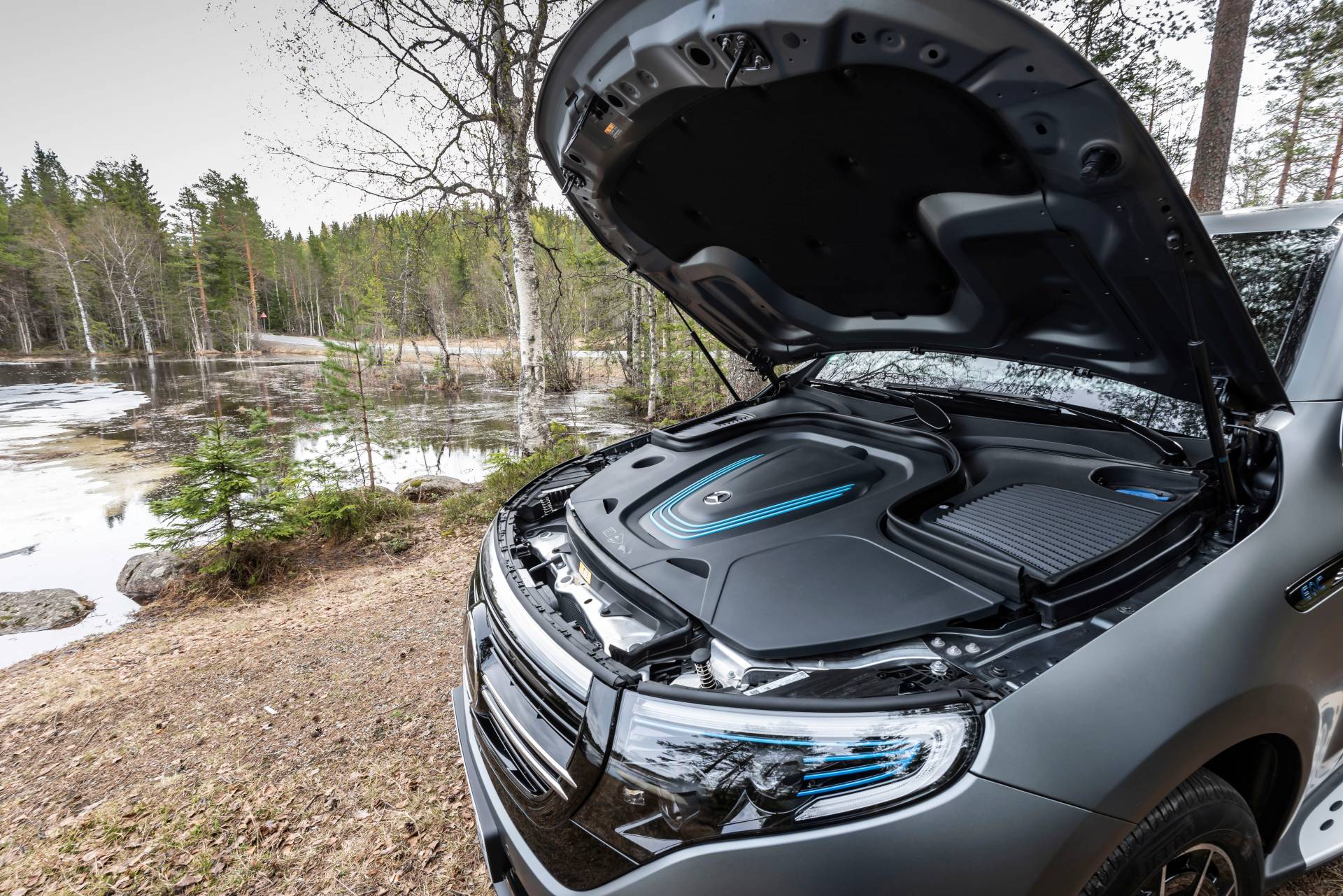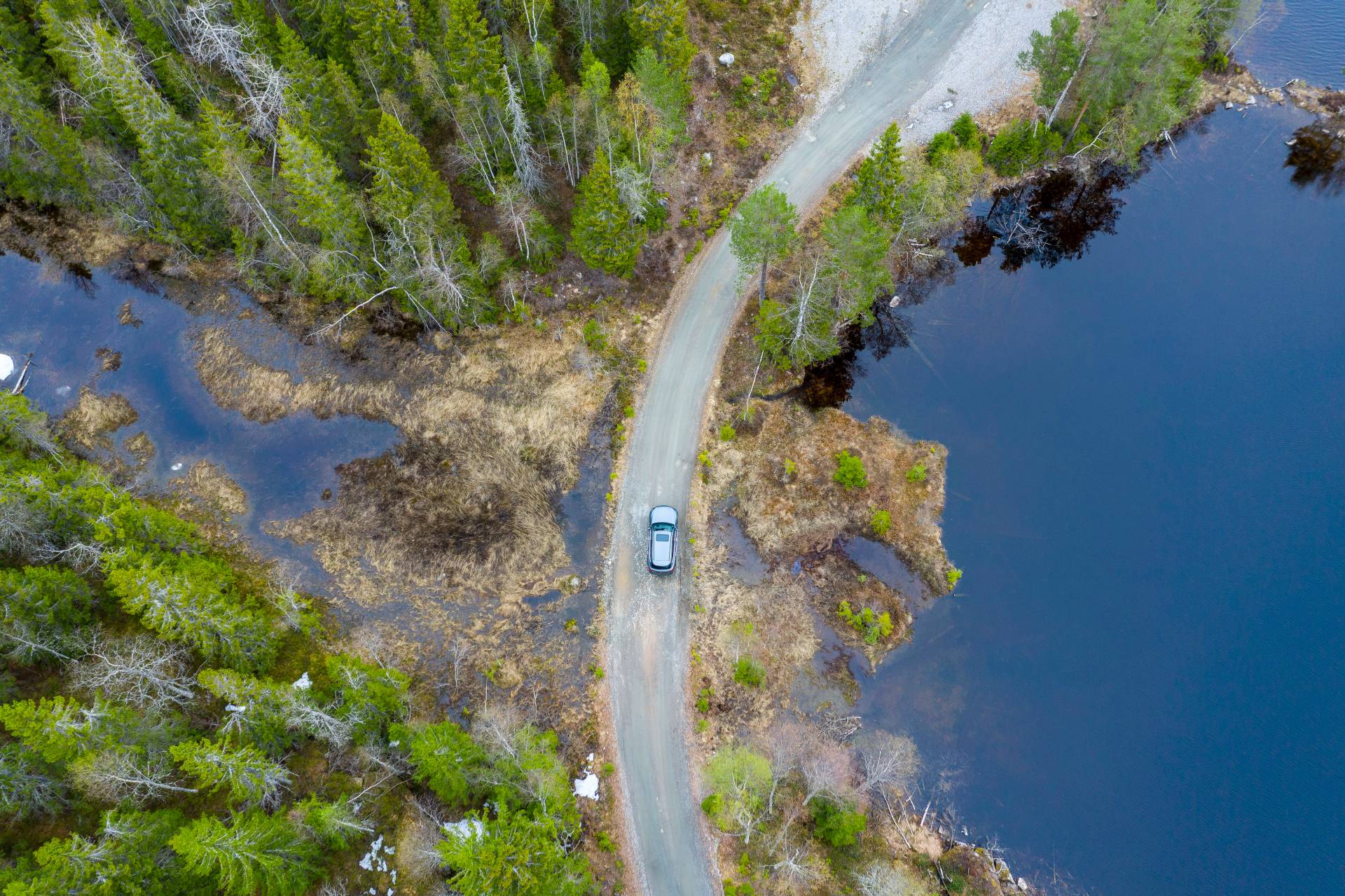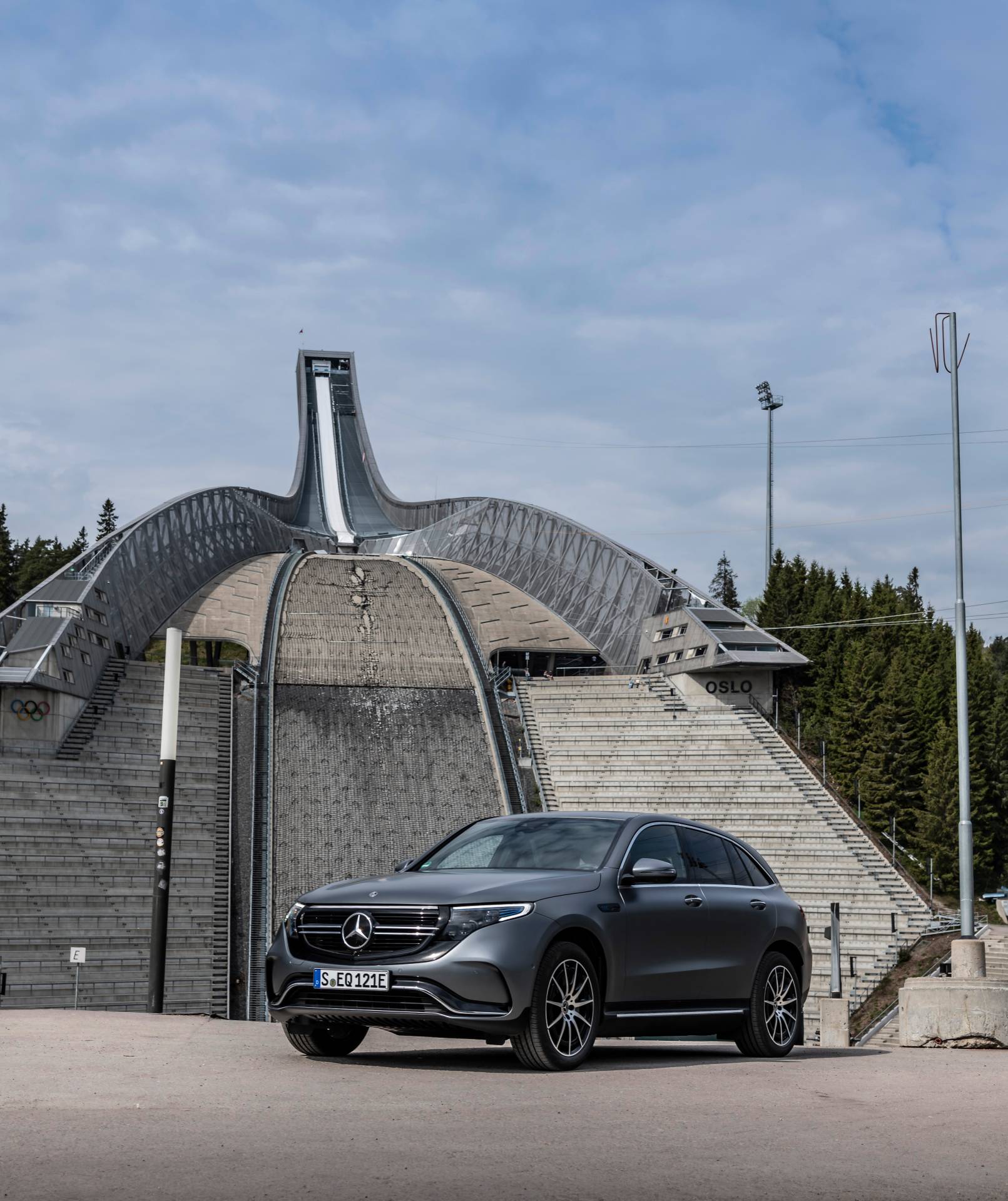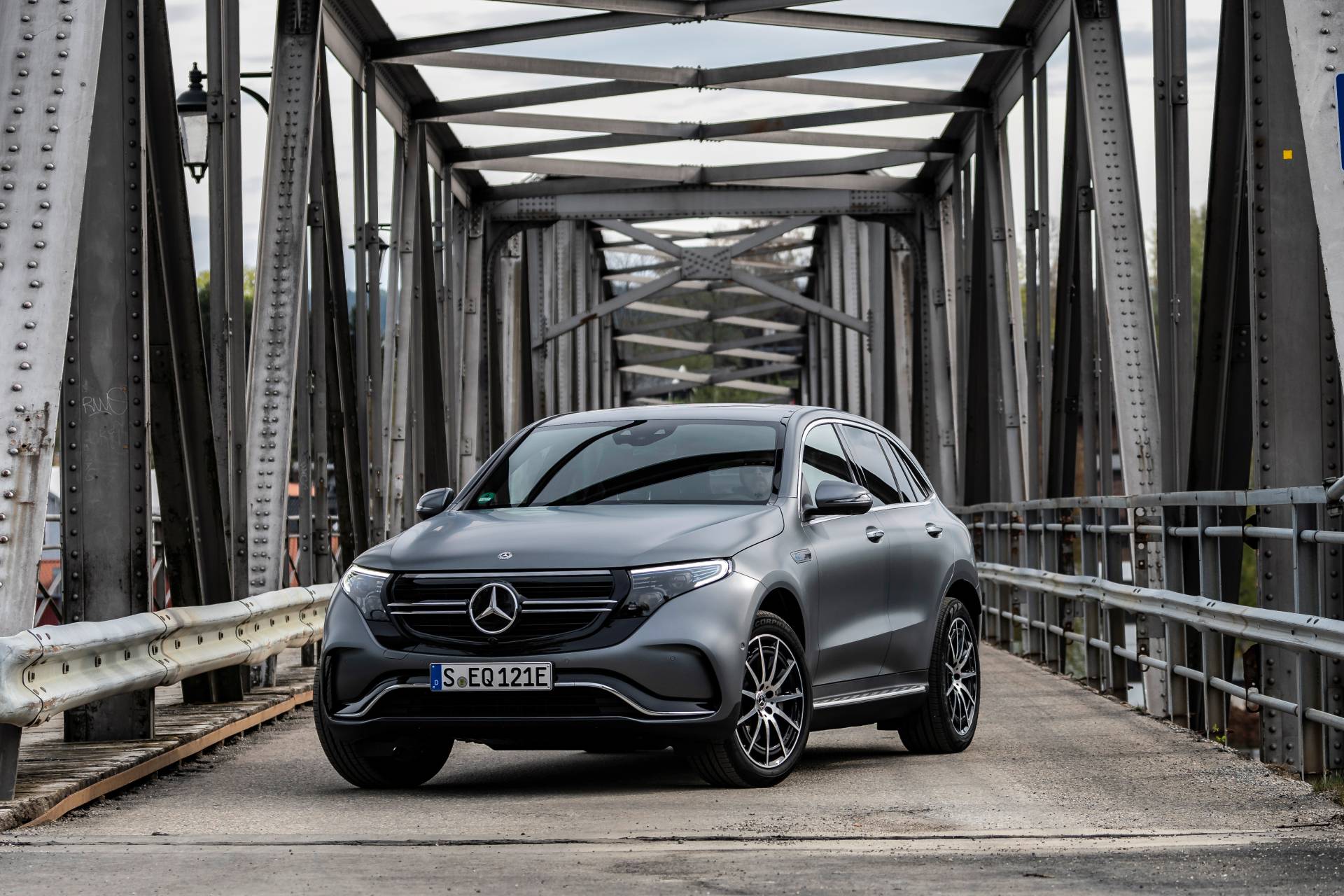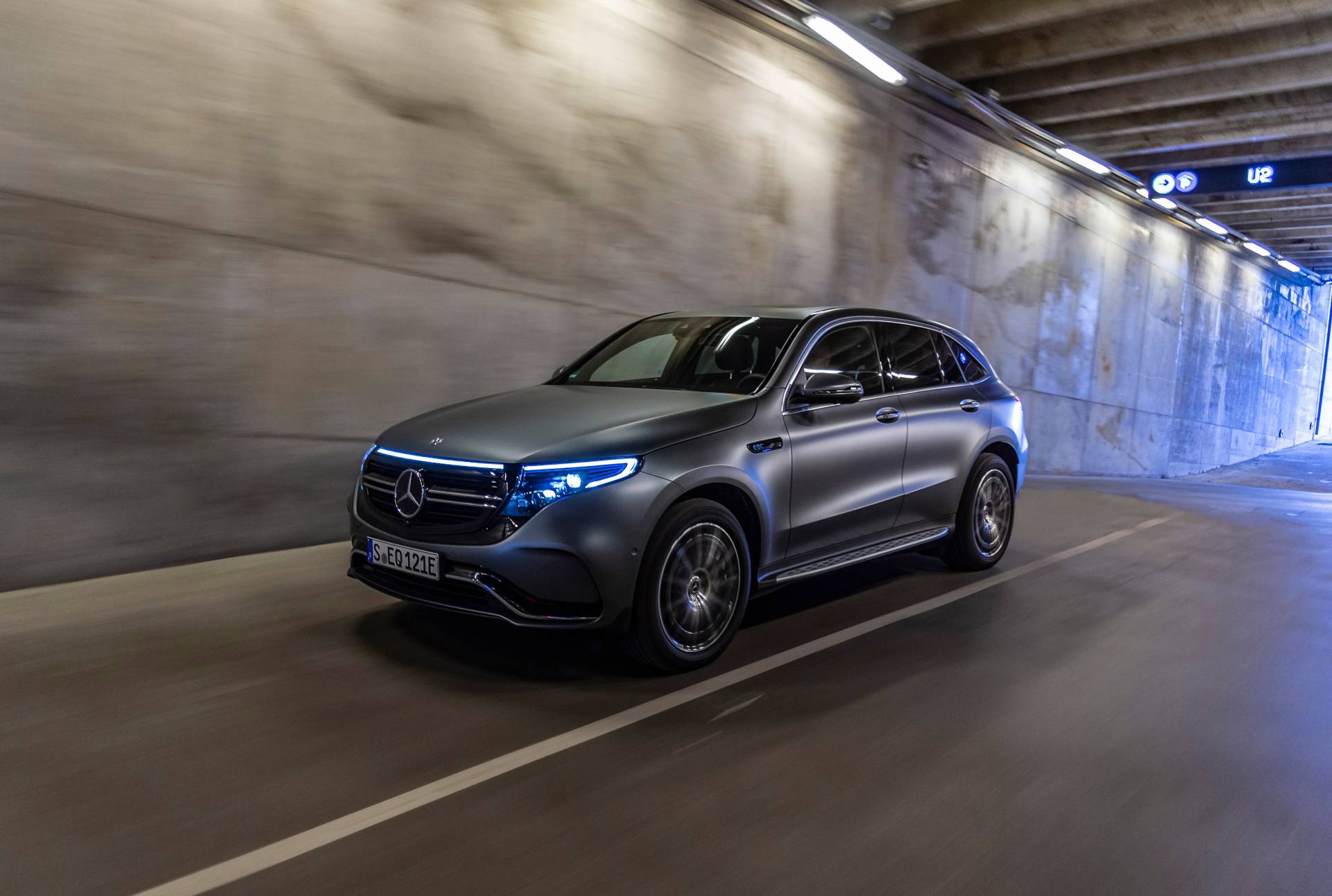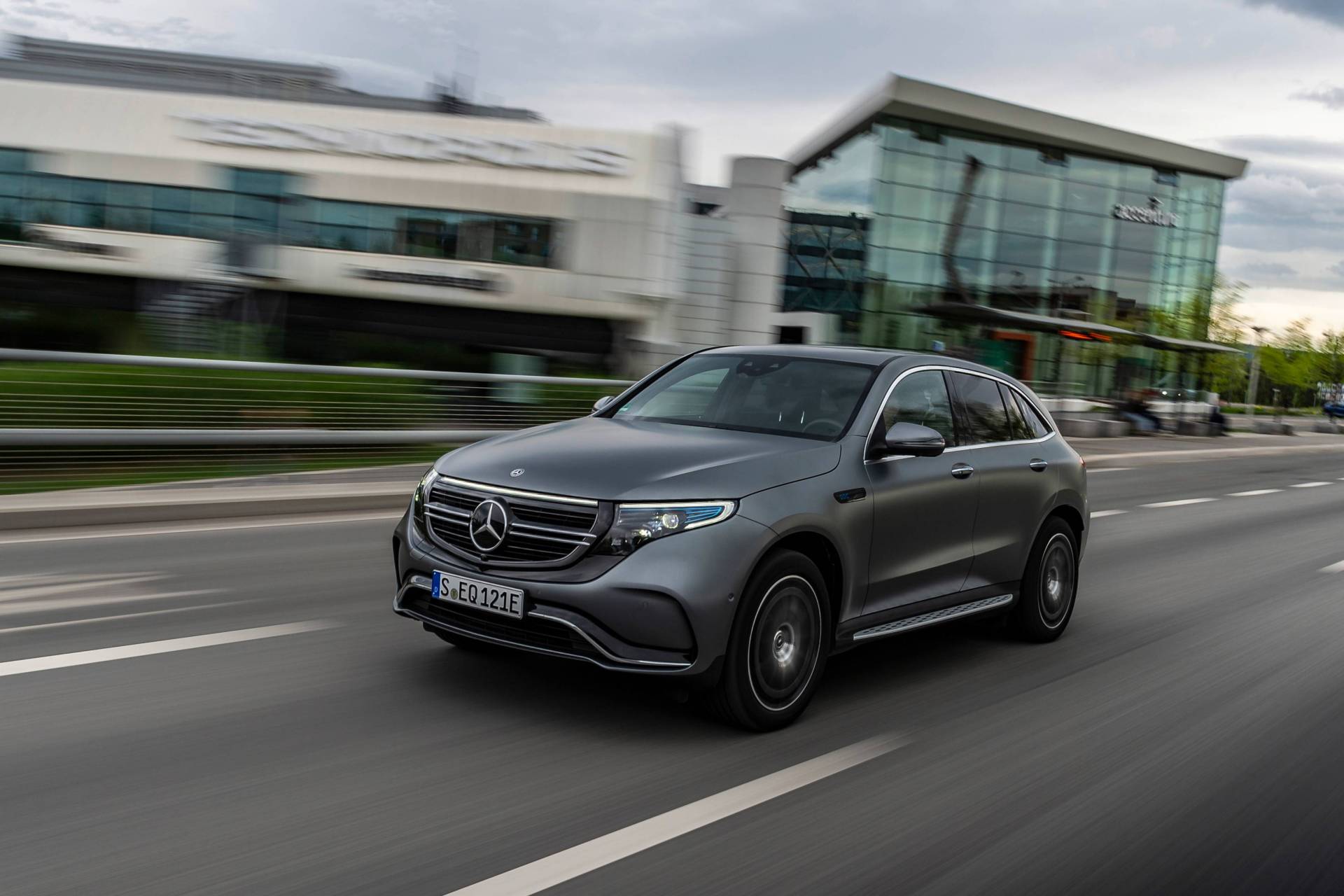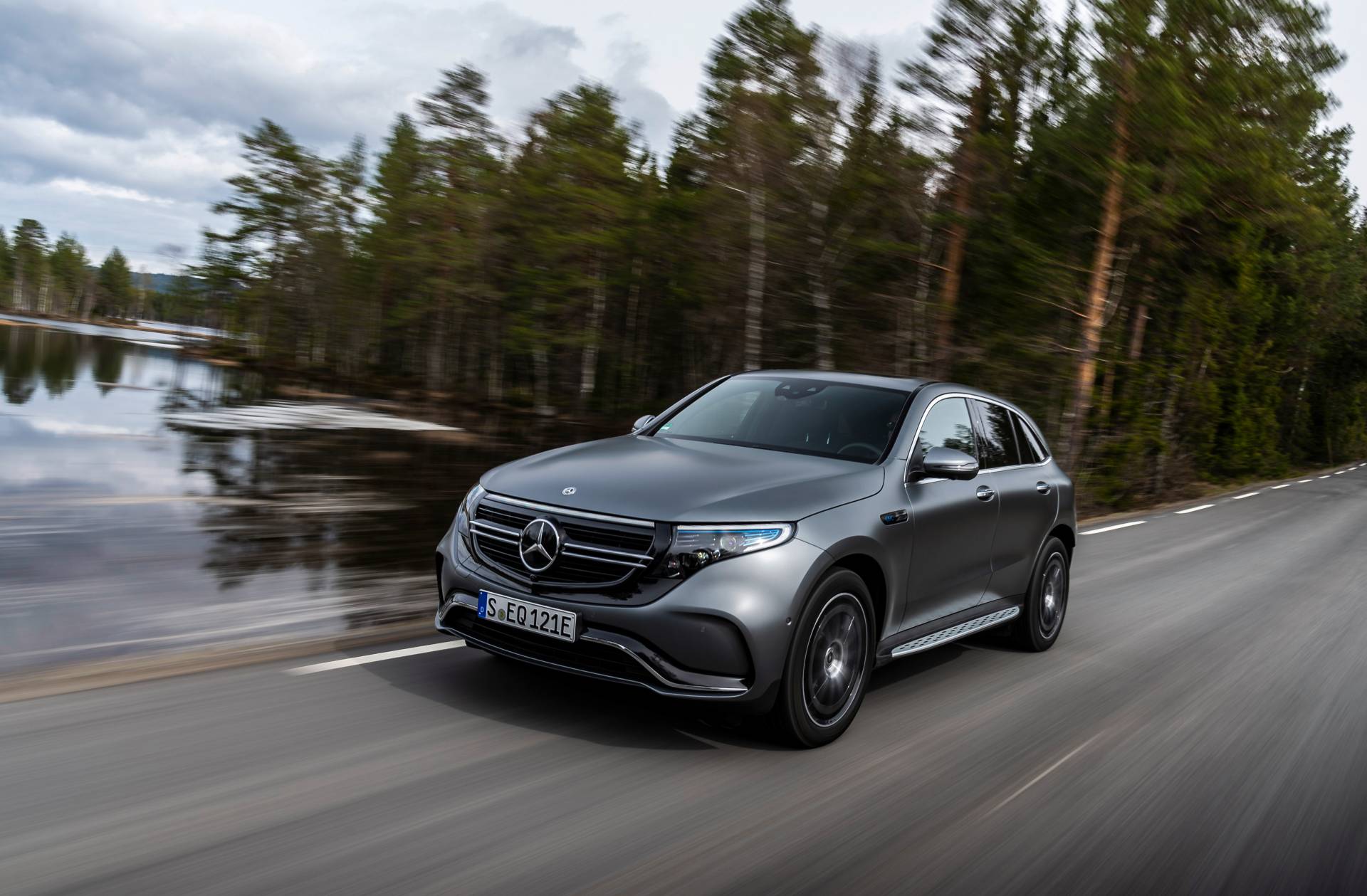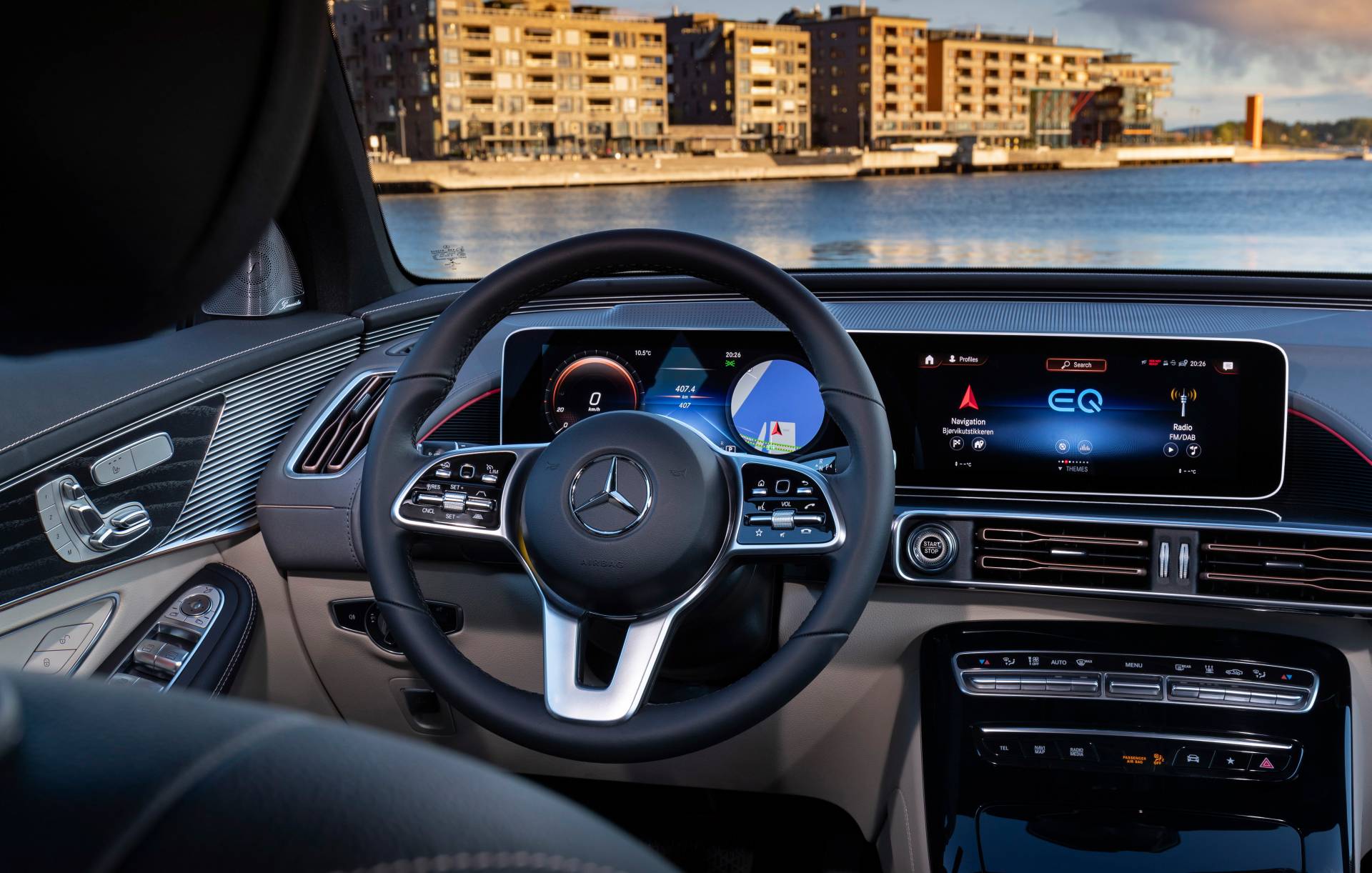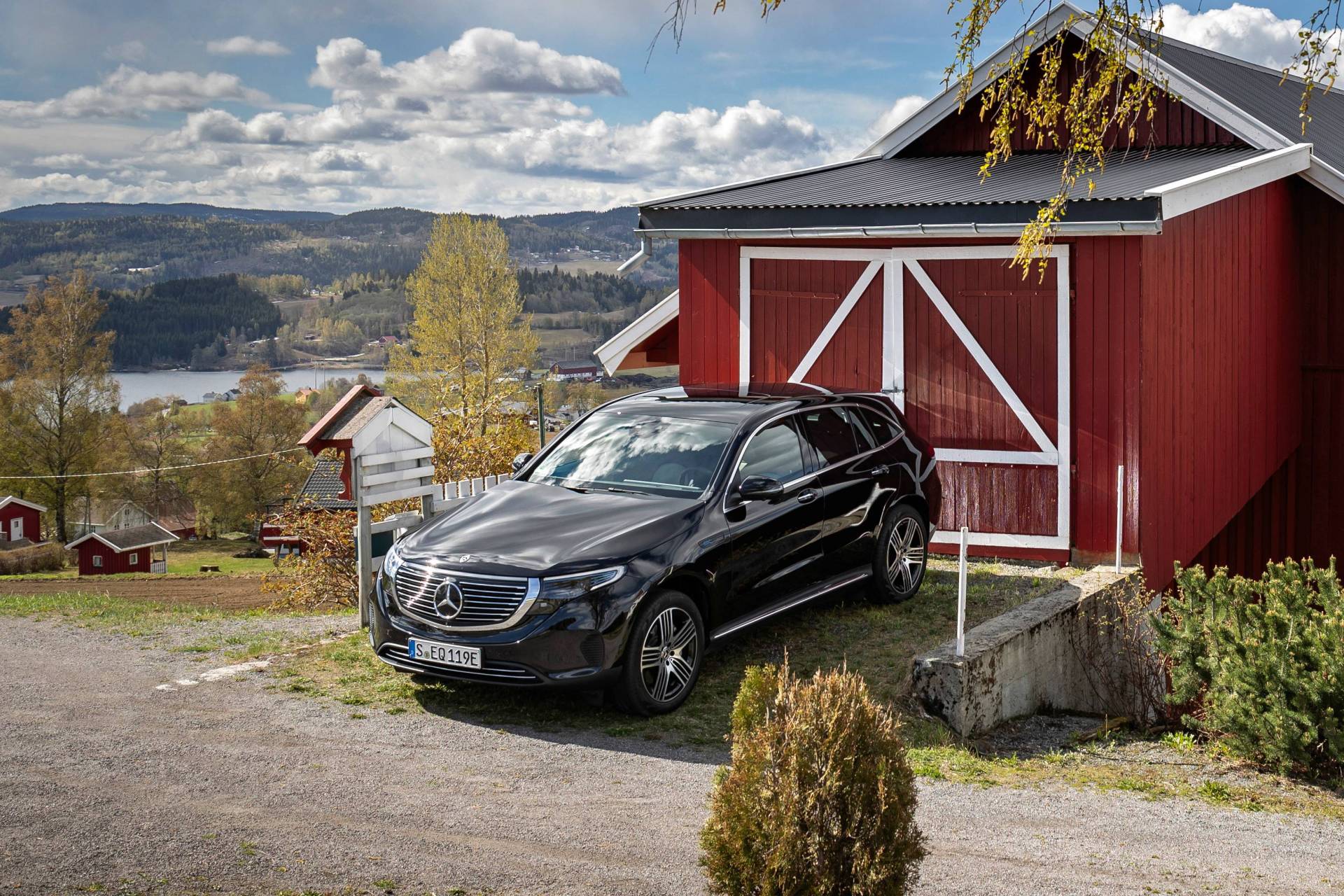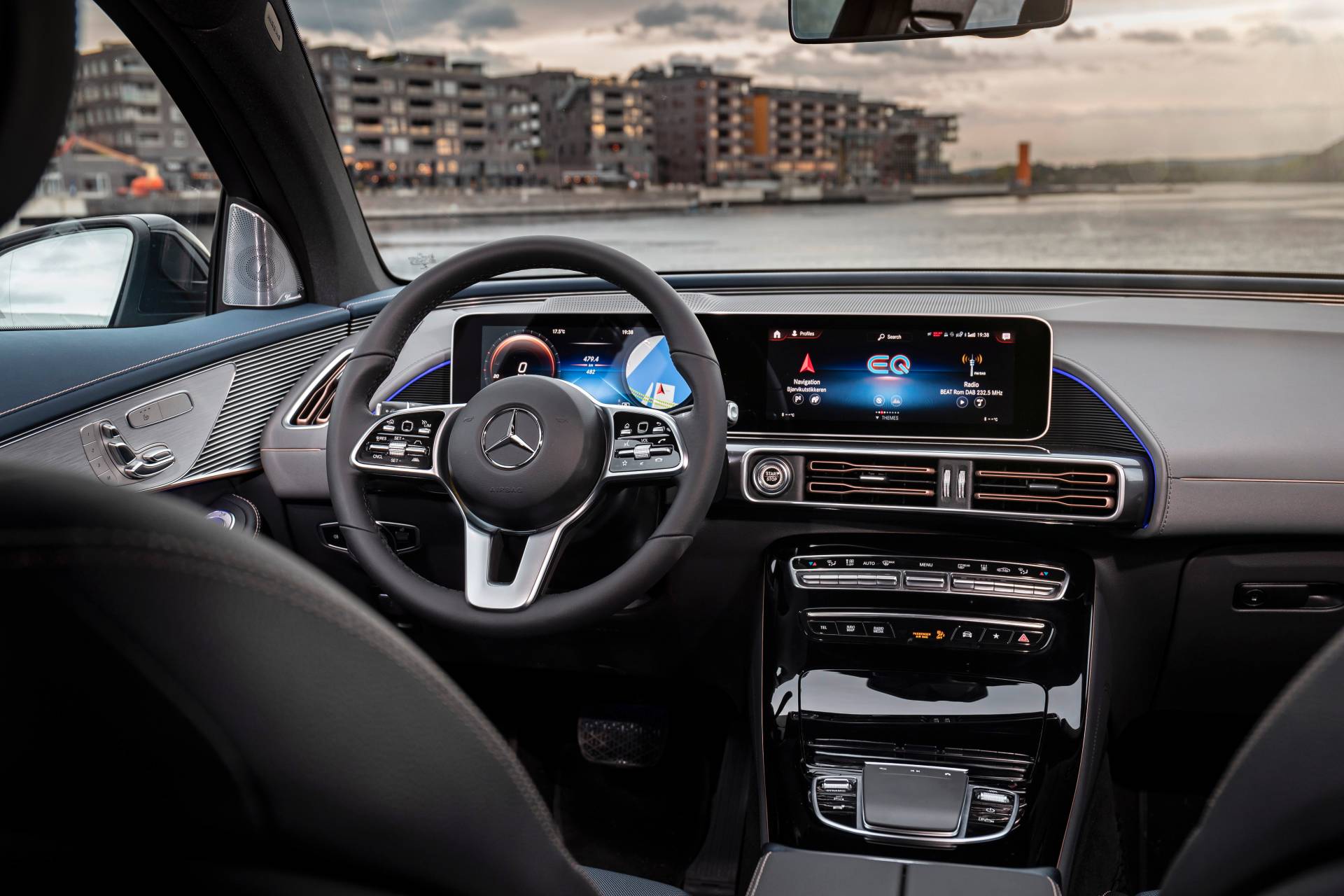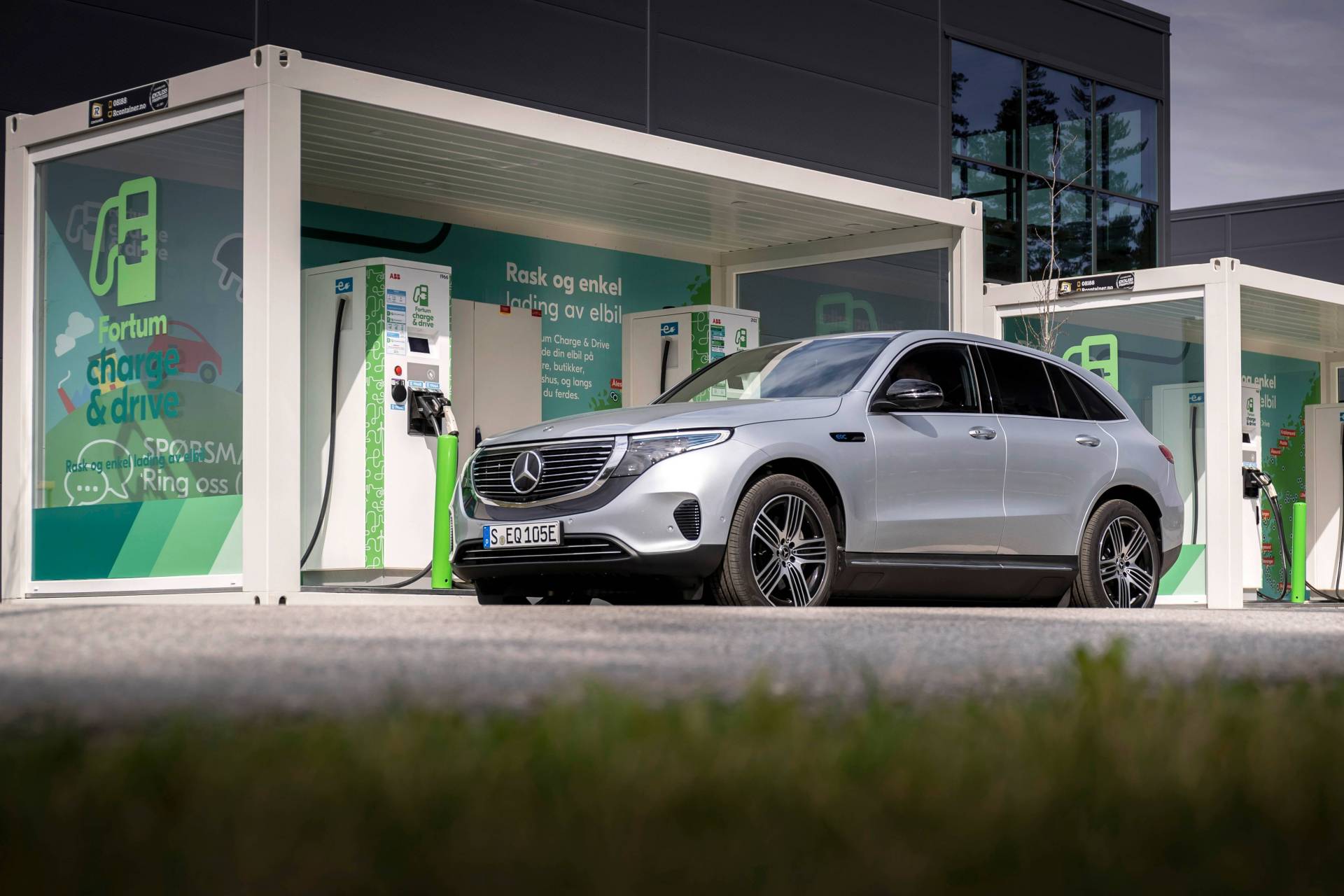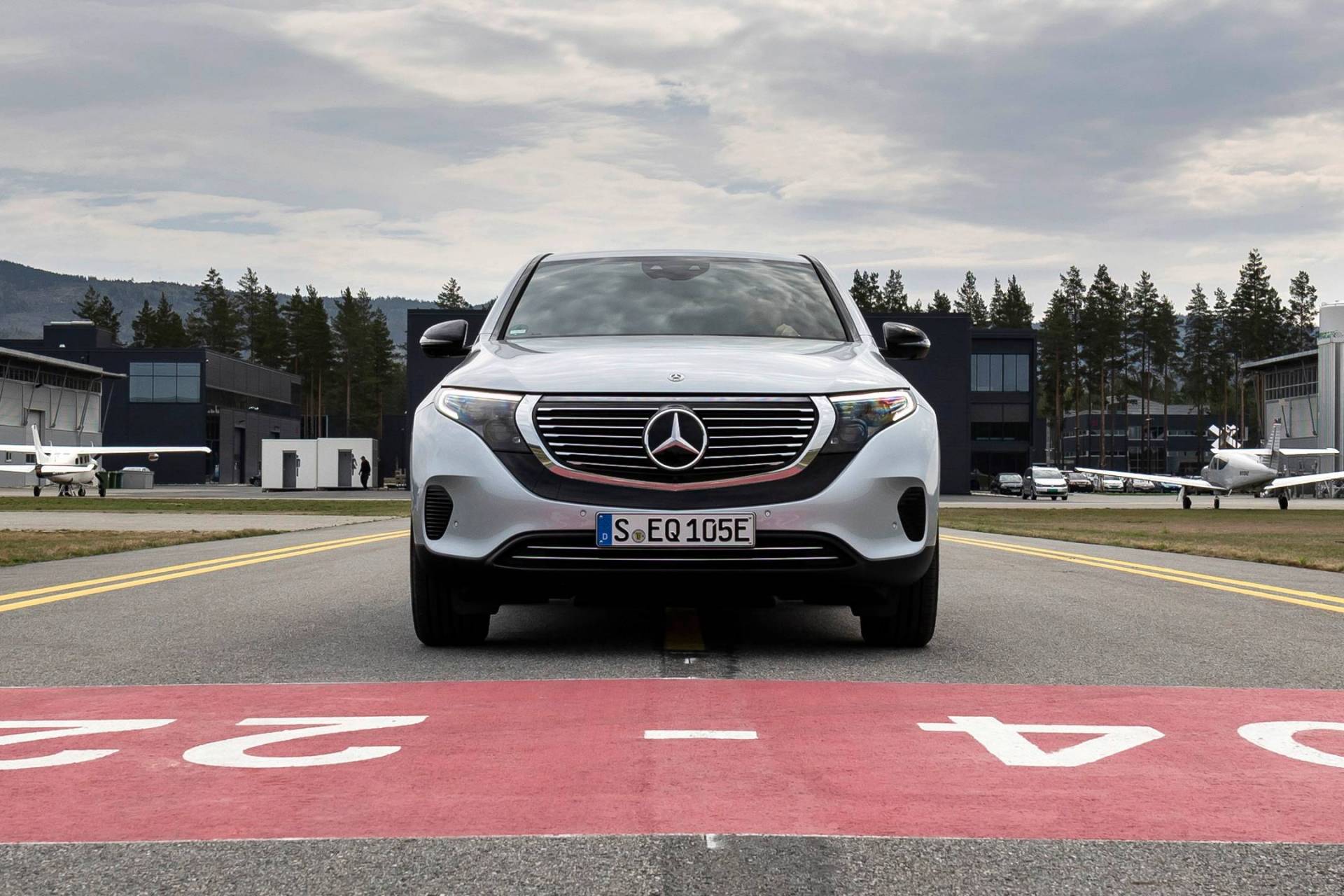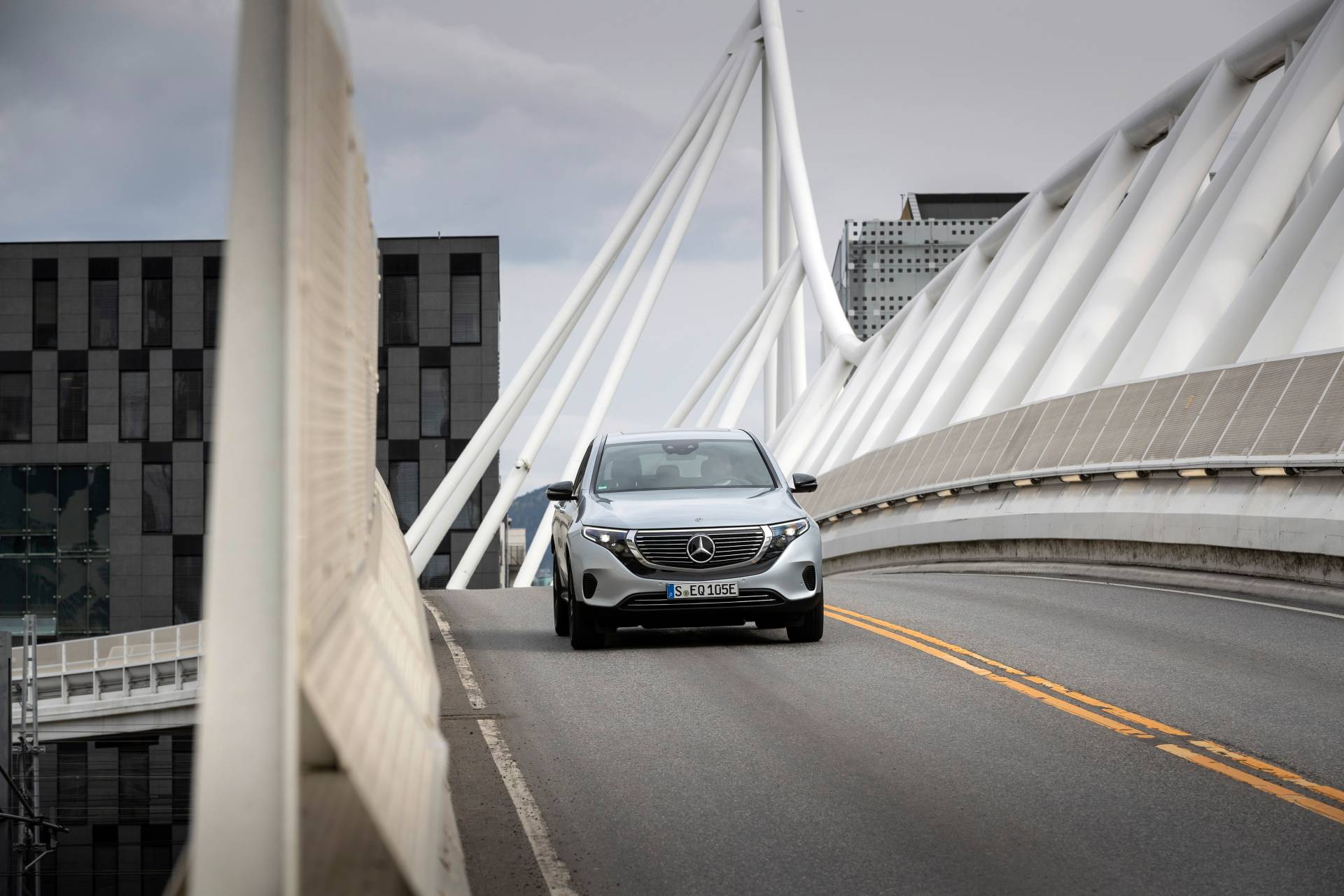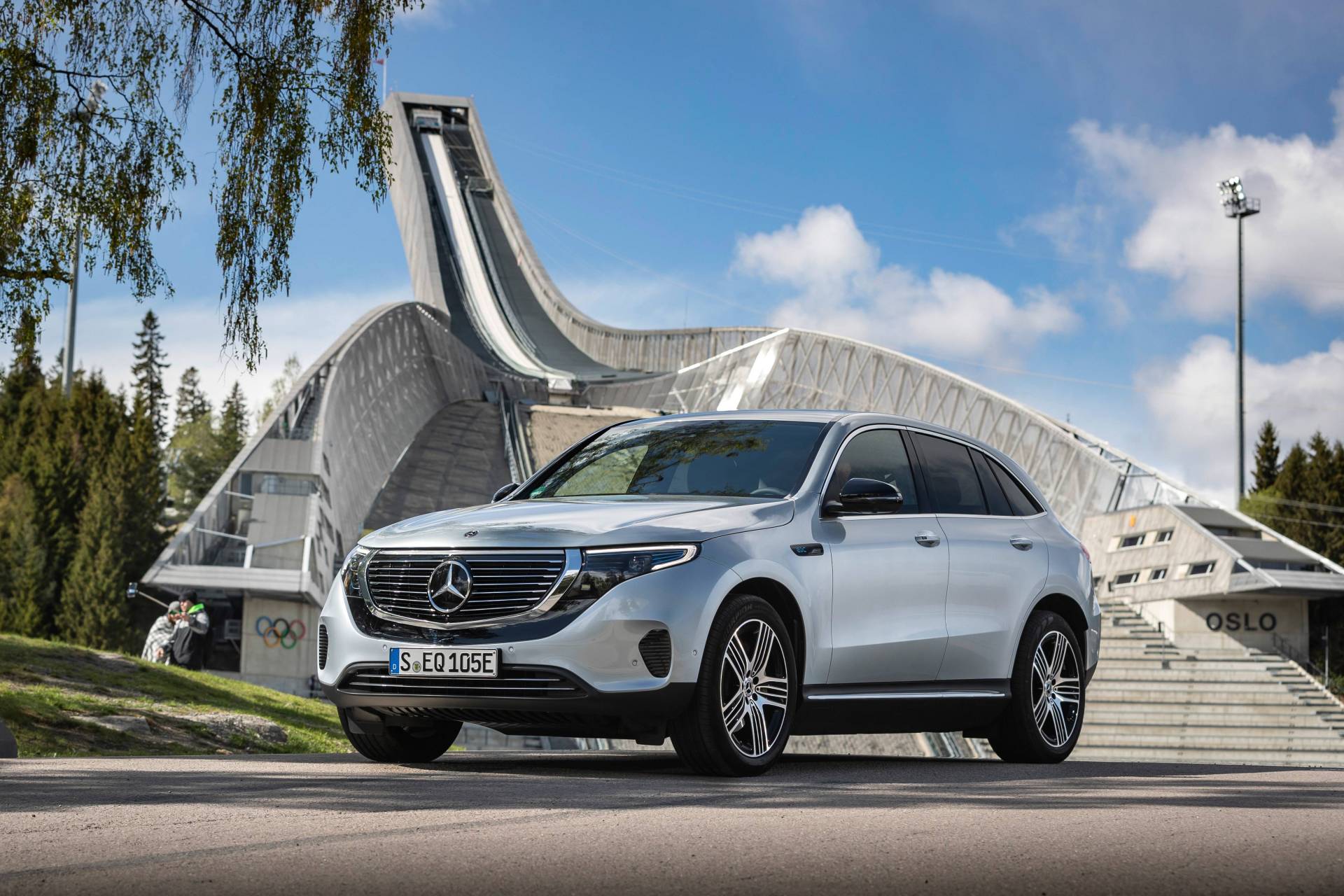Mercedes-Benz has chosen Oslo, Norway for the press launch of its new EQC electric crossover.
Dubbed the European “capital of e-mobility,” Oslo is the perfect place to present an all-new electric vehicle to the media. After all, we’re talking about Europe’s No. 1 market for electric vehicles. As is customary during events like this one, new photos of the 2020 EQC have been released along with additional details about the vehicle.
Mercedes-Benz makes a lot of noise about the EQC’s “Electric Intelligence” mobility package which includes a variety of services – from optimized navigation to charging management. These are made possible by the coordinated drive system, battery management, charging management, recuperation strategies, digital services, and the MBUX infotainment system.
Also Read: Mercedes EQC Priced From £65,640 Or The Same As GLE In The UK, In Dealerships From July
For example, EQC drivers can plan their destinations from the home or office, enter a departure time and set the desired cabin temperature. Then they receive a planned route including necessary charging stops and an arrival time. They can also receive a push notification when the charging process starts and ends. All these services are possible directly via MBUX or via the Mercedes Me app.
The “Electric Intelligence” package also includes the EQC optimized navigation which plans a route automatically using numerous factors, including charging stops. To calculate the optimal route, the system takes into account the current charge status of the battery, the weather, the topography, the traffic flow, and available charging stations. The driver can make changes to the route while on the move using the voice control function activated by the keywords “Hey Mercedes.”
The Mercedes-Benz EQC is powered by two asynchronous electric motors (one on each axle for AWD capability) that generate an output of 492 HP (408 PS) and a maximum combined torque of 760 Nm (560 lb-ft). According to the automaker, the 0-100 km/h (0-62 mph) sprint takes 5.1 seconds and top speed is 180 km/h (112 mph).
The motors are powered by an 80 kWh lithium-ion battery pack placed in the car’s floor, with the driving range estimated at between 445 km (276 miles) and 471 km (293 miles) as per the NEDC. Charging the battery from 10 to 80 percent takes around 40 minutes using a 110 kW fast charger.







